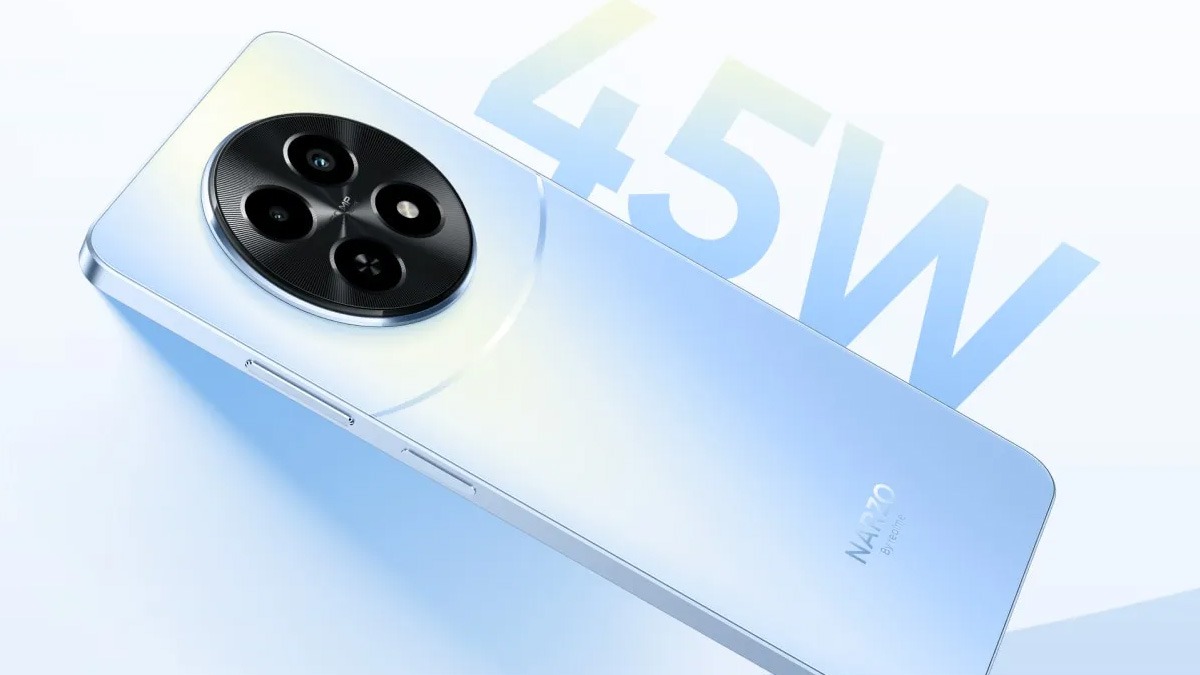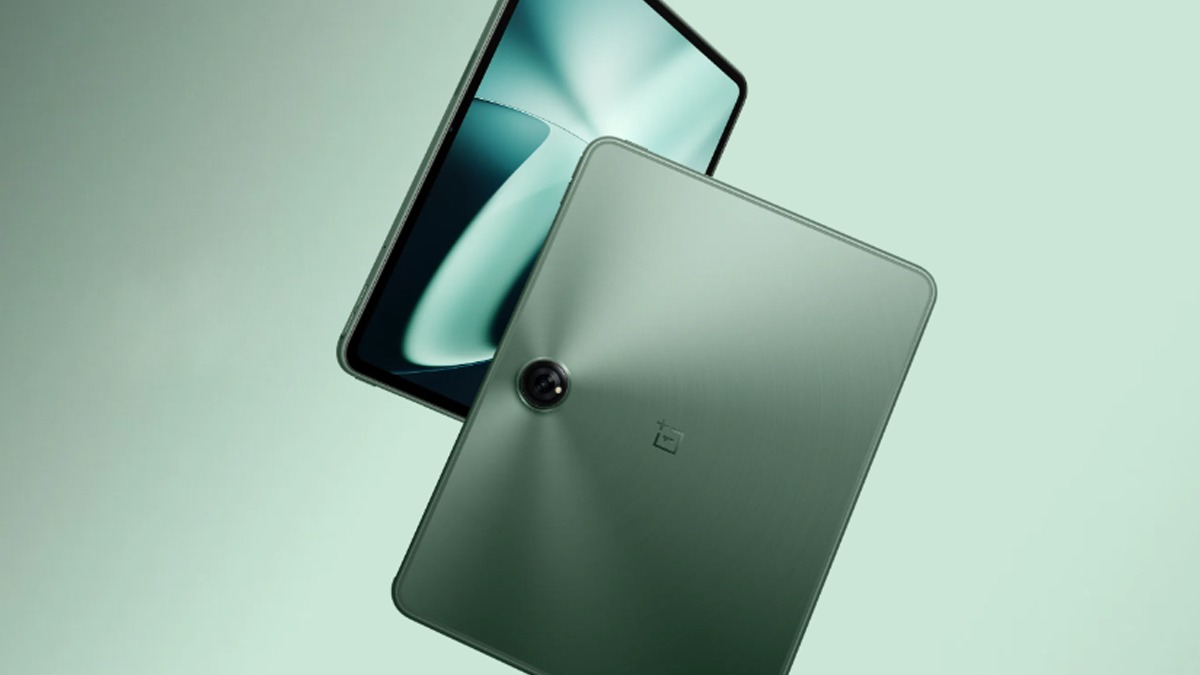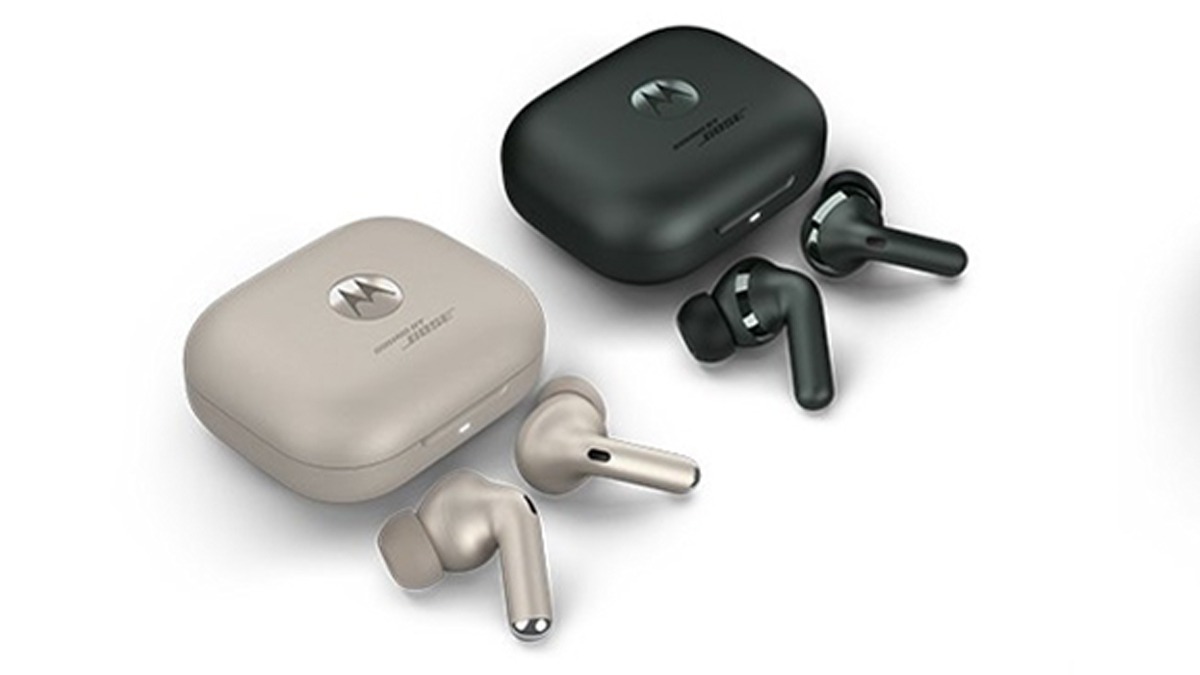Just In
- 10 hrs ago

- 12 hrs ago

- 12 hrs ago

- 13 hrs ago

Don't Miss
- Movies
 Pukaar Dil Se Dil Tak Promo: Sayli Salunkhe Impresses In First Video Of Sony TV Show, Details About Her Role
Pukaar Dil Se Dil Tak Promo: Sayli Salunkhe Impresses In First Video Of Sony TV Show, Details About Her Role - Sports
 Who Won Yesterday's IPL Match 34? LSG vs CSK, IPL 2024 on April 19: KL Rahul Stellar Batting Show Decimate Chennai Bowling
Who Won Yesterday's IPL Match 34? LSG vs CSK, IPL 2024 on April 19: KL Rahul Stellar Batting Show Decimate Chennai Bowling - Finance
 Rs 17/Share Dividend: Record Date On April 26; Buy The ICICI Group Stock To Be Eligible?
Rs 17/Share Dividend: Record Date On April 26; Buy The ICICI Group Stock To Be Eligible? - Lifestyle
 Golden Rules To Follow For Happy Marriage For A Long Lasting Relationship
Golden Rules To Follow For Happy Marriage For A Long Lasting Relationship - News
 Chinese President Xi Jinping Orders Biggest Military Reorganisation Since 2015
Chinese President Xi Jinping Orders Biggest Military Reorganisation Since 2015 - Education
 Exam Pressure Does Not Exist; Studying Punctually is Crucial; Says Aditi, the PSEB 2024 Topper
Exam Pressure Does Not Exist; Studying Punctually is Crucial; Says Aditi, the PSEB 2024 Topper - Automobiles
 Suzuki Swift Hatchback Scores 4 Star Safety Rating At JNCAP – ADAS, New Engine & More
Suzuki Swift Hatchback Scores 4 Star Safety Rating At JNCAP – ADAS, New Engine & More - Travel
 Journey From Delhi To Ooty: Top Transport Options And Attractions
Journey From Delhi To Ooty: Top Transport Options And Attractions
Xiaomi Redmi Note 8 Pro Quick Review: Better Than Some Value Flagship Smartphones
The much-anticipated Xiaomi Redmi Note 8 Pro has finally been unveiled in the Indian market. This year's Redmi Note series flagship handset comes at a starting price of Rs. 14,999 for the 6GB RAM, 64GB storage variant. The 6GB RAM + 128GB storage variant will cost Rs. 15,999 and the top-end variant with 8GB RAM and 128GB storage is priced at Rs. 17,999 in India. The handset has a lot on its shoulders since the competition in the sub 20K price-segment has scaled new heights.

For starters, the Redmi Note 8 Pro is already facing a tough competition by the widely-popular Realme XT, which has already claimed the title of the World's first 64MP camera smartphone. Next in line are Samsung, Nokia and Motorola which have also expanded their product-lineup with some solid offerings in the sub 20K price bracket.
Xiaomi is ready for the big fight as the Redmi Note 8 Pro's Indian variant packs in all the high-end features. The Redmi Note 8 Pro is powered by the all-new MediaTek G90T chipset. It also features a 64MP quad-lens camera setup with a promise of delivering better performance than the Realme XT's 64MP camera implementation. Will Xiaomi win the fight of the best sub 20K smartphone? I used the smartphone for two days to find the answer. Please note that this is just a first impression of the Redmi Note 8 Pro and a detailed review will follow soon.

Design- More Durable And Premium Than The Redmi Note 7 Pro
Xiaomi Redmi Note 8 Pro feels slightly wider in hands as compared to its predecessor. This is because the smartphone features a slightly bigger display (6.53-inch) than the Redmi Note 7 Pro (6.3-inch). The phone is also noticeably heavier than the predecessor due to a bigger battery and an extra-lens in the camera configuration.
Despite the increased weight and wider frame, the Redmi Note 8 Pro somehow manages to fit snuggly in the palm, thanks to the 4-sided curved glass and the company's Aura design philosophy.

Corning Gorilla Glass 5 and IP52 Water-Dust Resistivity
The Redmi Note 8 Pro offers Gorilla Glass 5 on both front and the back panel with a chrome-plated plastic frame holding the two sides firmly. The design is also IP52 certified for water and dust resistance, making the Redmi Note 8 Pro the first handset in the series and in this price-bracket to offer the official ‘Ingress Protection' rating.

Type-C Port, 3.5mm Audio Jack, Dedicated microSD Card
The right side of the frame houses the volume rockers and the power button. The left edge offers two slots- the first one takes in a nano-SIM card and a microSD card (dedicated memory slot), and the second slot for another nano-SIM card. The 3.5mm headphone jack is positioned at the bottom along with a Type-C charging port and a bottom-firing speaker, which as per Xiaomi is a self-cleaning speaker module.
The bottom chin's thickness has also been reduced as the company has placed the display drivers on a chip (CoF- Chip on Film), something Honor/Huawei has been doing since a while now. As a result, the Redmi Note 8 Pro offers a 91.6% screen-to-body ratio.

Fingerprint Scanner’s Placement Is Questionable
As opposed to the Realme XT's four-lens camera array which places all sensors in a straight line, the Redmi Note 8 Pro has three + one camera array. The macro lens is paired up with an LED flashlight and is placed adjacent to the triple-lens camera setup. The company has moved the fingerprint scanner onto the clasp with the three-lens camera setup.
The positioning is convenient to unlock the device but your index finger can frequently smudge the nearest camera lens in the configuration. The biometric scanner is placed too close to the ultra-wide-angle lens.
But overall, Xiaomi Redmi Note 8 Pro comes across as a better-looking device than its predecessor. The design is now more closely related to the Redmi K20 series than the previous Redmi Note series handsets. The Redmi Note 8 Pro is available in three variants- Gamma Green, Halo White and Shadow Black.

Display- 6.53-inch IPS LCD panel, HDR-Enabled, 91.6% Screen-to-Body Ratio
Xiaomi Redmi Note 8 Pro sports a 6.53-inch IPS LCD panel. The 1080 x 2340px resolution screen comes in 19.5:9 aspect ratio and can touch a peak brightness level of 500 nits. It does get sufficiently bright and also offers good contrast levels. However, the colour accuracy seems slightly off. The whites look slightly bluish in the display's increased contrast mode.
The standard mode corrects the accuracy to a good extent though. The videos we played on the Redmi Note 8 Pro's screen looked crisp and lively as the display is also HDR-enabled. The gameplay is also very immersive on the Redmi Note 8 Pro. The screen also gets Gorilla Glass 5 protection.

Redmi Note 8 Pro Camera Specifications- 64MP plus 8MP plus 2MP plus 2MP
The camera setup on the Redmi Note 8 Pro is very similar to the Realme XT. There's a massive 64MP sensor (f/1.9 aperture) with PDAF support. It is essentially an ISOCELL Bright GW1 sensor developed by Samsung. The 64MP primary camera is paired with an 8MP f/2.2 wide-angle lens, 2MP depth-sensor and a 2MP macro lens working on f/2.4 aperture.
The cameras can record 2160p@30fps, 1080p@120fps and 720p@960fps. For selfies, the Redmi Note 8 Pro sports a 20MP camera that uses f/2.0 aperture and is capable of 1080p/30fps video recording.

64MP Camera Samples Show Plenty Of Details And Accurate Colors
The 64MP camera samples shot in daylight offers plenty of details. The images show good contrast and decent dynamic range. Xiaomi has made some big changes in the way the camera processes the shots. The picture samples shot with Redmi Note 8 Pro show somewhat true to eyes colours; however, some images show muted colours. On the other, the same frames we shot with the Realme XT show boost up colours. With the Realme XT, you won't need to edit the shots but it is the Redmi Note 8 Pro that offers natural-looking images.
The pictures shot on the Redmi Note 8 Pro looks sharper. But once again, the camera also tends to over sharpen some parts of the frame. We are still testing both the handsets side-by-side so stay tuned for our comprehensive camera comparison of the Redmi Note 8 Pro and Realme XT.

Impressive Portraits, Decent Macros, Underwhelming Wide-angle Shots
While the images captured from the wide-angle lens (120-degree) fail to impress, the portrait lens delivers some impressive shots. The subject segregation is quite effective and the lens can also effectively create bokeh with human and non-human subjects. Some portraits we captured from the Redmi Note 8 Pro looked even better than the bokeh shots captured on the OnePlus 7T.
The 2MP dedicated macro lens also does a good job in taking close up shots. The macro lens allows you to go as close as 2cm from the subject. In the initial tests, we found that the macros shots captured on the Redmi Note 8 Pro look better than the macros captured on the Realme XT's macro lens. The Redmi Note 8 Pro's camera better processes the colours and those intrinsic details.

Low-Light Shots And Selfies
The low-light shots come out quite good if you enable the dedicated night mode. The amount of details in shadows is appreciable and the camera also maintains good sharpness levels. As far as the front-facing camera is concerned, the Redmi Note 8 Pro offers a bigger 20MP selfie camera which is packed with several AI features. The selfie output is crisp and shows plenty of details.

Hardware- MediaTek G90T Gaming Chipset With Up To 8GB RAM
The Redmi Note 8 Pro is my first test device with the all-new MediaTek G90T chipset. It is the first game-centric CPU from MediaTek and was announced on July 2019 along with the MTK G90. The octa-core SoC works on the Arm Cortex-A76 and Cortex-A55's cores in a 2+6 configuration. The chipset uses Mali-G76 3EEMC4 GPU that offers speeds up to 800MHz. The MTK G90T has large L3 cache and speeds of up to 2.05GHz.
We are currently using the top-end 8GB RAM + 128GB ROM variant of the Redmi Note 8 Pro. I have also integrated a 256GB microSD card to check if it affects the performance of the device by any means. As expected, the Redmi Note 8 Pro runs blazingly fast and without any performance issues. The smartphone is super snappy and runs all the applications and tasks without breaking up a sweat. Games like PUBG and Asphalt 9 feel very responsive and immersive.
Xiaomi claims a 34% bump in the benchmarks' performance with the new chipset and GPU. But we will soon run our benchmarks to test how the octa-core MTK G90T ranks among the Qualcomm counterparts.

Audio Performance
The single bottom-firing speaker is good for indoor use but you would still need headphones for an immersive audio experience. The audio produced is clean but not very loud. Xiaomi has also improved the haptic feedback on the Redmi Note series. The typing experience on the Redmi Note 8 Pro is the best I have experienced on a sub 20K handset.

MIUI 10.4 With Amazon Alexa Built-In And Game Turbo Mode
As far as the software is concerned, the Redmi Note 8 Pro runs on the MIUI 10.4.2 based on Android Pie. I was hoping for the MIUI 11 out-of-the-box but In addition to the usual MIUI features, the Redmi Note 8 Pro also offers a Game Turbo mode, thanks to the game-centric MTK G90T CPU. The Game Turbo mode features a game speed booster, in-game shortcuts, and a dedicated performance mode to enhance the gaming performance. You can also enable ‘Performance Optimization' to avoid overheating and hardware related issues with the device.
The MIUI 10.4.2 also offers a system-wide ‘Dark mode' and Digital wellbeing. You can also enable ‘Always On' screen and can apply several watch faces on the locked screen. Interestingly, Xiaomi has also integrated Amazon Alexa into the Redmi Note series lineup. The Redmi Note 8 Pro is the first handset in the Indian market with built-in Amazon Alexa for hands-free operations.

Battery Life, Audio and Connectivity
The Redmi Note 8 Pro gets the biggest battery on a Redmi Note device. It is backed by a 4,500mAh battery unit which easily lasted for 36 hours on moderate usage. The phone can last for a day even if you stream videos and play games. Importantly, the company is offering an 18W fast-charger in the package. For connectivity, the Redmi Note 8 Pro has two SIM cards, a microSD card slot, Type-C port, Wi-Fi, Bluetooth 5.0, FM, IR blaster and a 3.5mm headphone jack.

Early verdict
Xiaomi Redmi Note 8 Pro is an ideal upgrade to the Redmi Note 7 Pro in every possible way. The company has offered a better camera setup, bigger battery unit, better and durable design, noticeable performance upgrades, 18W fast-charger in the box and even a dedicated microSD card slot at the same aggressive price-point. The 6GB RAM is now standard on all the Redmi Note 8 Pro variants.
We are still using the handset to evaluate more about the Redmi Note 8 Pro's camera, processing and gaming performance. You will get to read everything in detail in our comprehensive review of the smartphone.
-
99,999
-
1,29,999
-
69,999
-
41,999
-
64,999
-
99,999
-
29,999
-
63,999
-
39,999
-
1,56,900
-
79,900
-
1,39,900
-
1,29,900
-
65,900
-
1,56,900
-
1,30,990
-
76,990
-
16,499
-
30,700
-
12,999
-
62,425
-
1,15,909
-
93,635
-
75,804
-
9,999
-
11,999
-
3,999
-
2,500
-
3,599
-
8,893












































